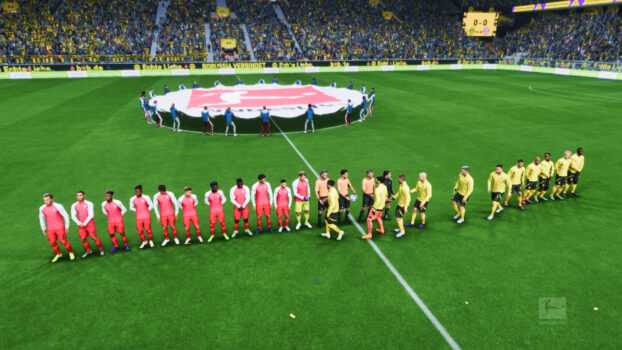It was estimated that in 2024, the worldwide value of the video game industry would surpass 282 billion US dollars, with sports titles forming a significant and expanding part of it. EA Sports FC, previously known as FIFA, is still one of the most widely played sports video game titles globally, thanks to years of accumulated development and player input.
This article examines the impact of the last technological advances, such as graphics engines, artificial intelligence, and data analytics, not only on EA Sports FC but on online gaming in general. We will also analyze the intersection of these advances with phenomena in other gaming industries, like online casino gaming, to illustrate the impact of convergent technology on the development of modern games.
Breaking Down the Core Technologies Behind EA Sports FC
Change from FIFA to EA Sports FC is more than a rebranding exercise. It is part of a wider push toward realism and technical innovation. One of the best enhancements is HyperMotion V, the latest feature in the series that utilizes volumetric hyper data from 180+ professional matches and contains animation as well as motion capture for every new version of the game. Unlike traditional animation, where players are recorded in a studio, this technique captures actual player movements from live games and employs machine learning algorithms to render realistic motion for the characters in the game.
The graphics engine of EA has undergone improvement and refinement as well. Frostbite, originally created for first-person shooters, has slowly been adapted to support large-scale sports simulations. The latest version used in EA Sports FC features more advanced dynamic weather conditions, real-time lighting, and higher quality player models than ever before. These enhancements affect the visibility of the player, the physics of the ball, and even the player’s stamina.
In the server-side domain, online match latency, which has always irritated competitive gamers, has been reduced with the latest improvements. EA’s enlargement of the anti-cheat systems fostered the competitive community as well. They are now using machine learning to identify anomalous gameplay patterns and the use of automated systems.
How Realism and Immersion Are Reaching New Heights
Computer game spas featuring real-life football team EA FC are designed to simulate off-ball movements and defensive structures with tactical awareness, disciplined positioning, and advanced AI decision-making, reinforcing the need to log in hours of practice and hone one’s skills to be successful in the game.
The addition of off-the-pitch immersion features enables players to become forever invested in the game. Ultimate Team and Career mode stories emerge as players complete objectives and advance, making every player and every account unique and specially tailored to the user’s preference. Commentary features multiple announcer teams to add context-sensitive dialogues to milestone tournaments, enhancing the sports experience even more.

It is fascinating that the same attempt at realism can be seen in other areas of online gaming. In the gambling portion of online casinos, for example, the top casino sites are increasingly employing real-life mirrors like live dealers and interactive slot machines that utilize number generators and animated visuals. These casinos attempt to recreate the feel of actual casinos using the same graphics and networking technologies found in video games.
The difference in user expectations from diverse gaming categories, ranging from sports emulators to online casino gambling, has motivated developers towards a greater unified style, thorough polish with realistic movement, and enticing animation.
The Role of AI and Data in Shaping Gameplay
AI technologies are crucial for the construction and the continuous support of EA Sports FC. In the realm of gameplay, AI technologies such as machine learning are utilized to teach non-player characters to cope with a multitude of scenarios. These include effective defensive manoeuvres, progressive positional adjustments during build-up play, as well as varying tactical responses depending on the opponent.
Analyzing data is also critical for rating players and balancing the game. EA gathers data from real matches to determine the abilities of players and how teams function. For instance, Opta data is integrated into the models that measure player performance so that any changes in form or style of tactics employed in reality are mirrored in the game. With this, EA can move away from evaluations that relied on personal judgment to establish a dynamic, statistic-based feedback system.

Apart from gameplay features, content moderation and balancing the in-game economy, especially in Ultimate Team mode, are other areas where AI technology is being employed. The transfer market inflation is actively managed by algorithms, making certain adjustments to pack odds and sinks based on player activity so as not to disrupt the in-game economy.
In the rest of the gaming world, the same techniques are being implemented to refine content suggestions, user experience optimization, and regulation of in-game economies.
What This All Means for Players
The combination of real-time data, artificial intelligence, and advanced technology has deeply transformed players’ virtual experience with EA Sports FC. Tactics and player roles are reflected more accurately than ever in matches. Both casual and competitive players have been gaining more control over the game, and realism has increased steadily due to improvements in the foundational systems.
Striking increases in realism and a high level of detail come with greater expectations. For example, the lag time between real-world events and in-game reflections is becoming increasingly demanded.
Everything from mid-season roster update shifts concerning an emerging fan-favorite center forward to rapid updates needed to integrate real gameplay events seamlessly puts immense pressure on studios that rely on well-oiled technology pipelines.
The limitations that have been the focus of this discussion will most likely dictate the future of sports video games. These include fast responding AI, more sophisticated data processing systems, advanced graphics, and other elements.
 FIFA Infinity The Absolute FIFA Site
FIFA Infinity The Absolute FIFA Site




